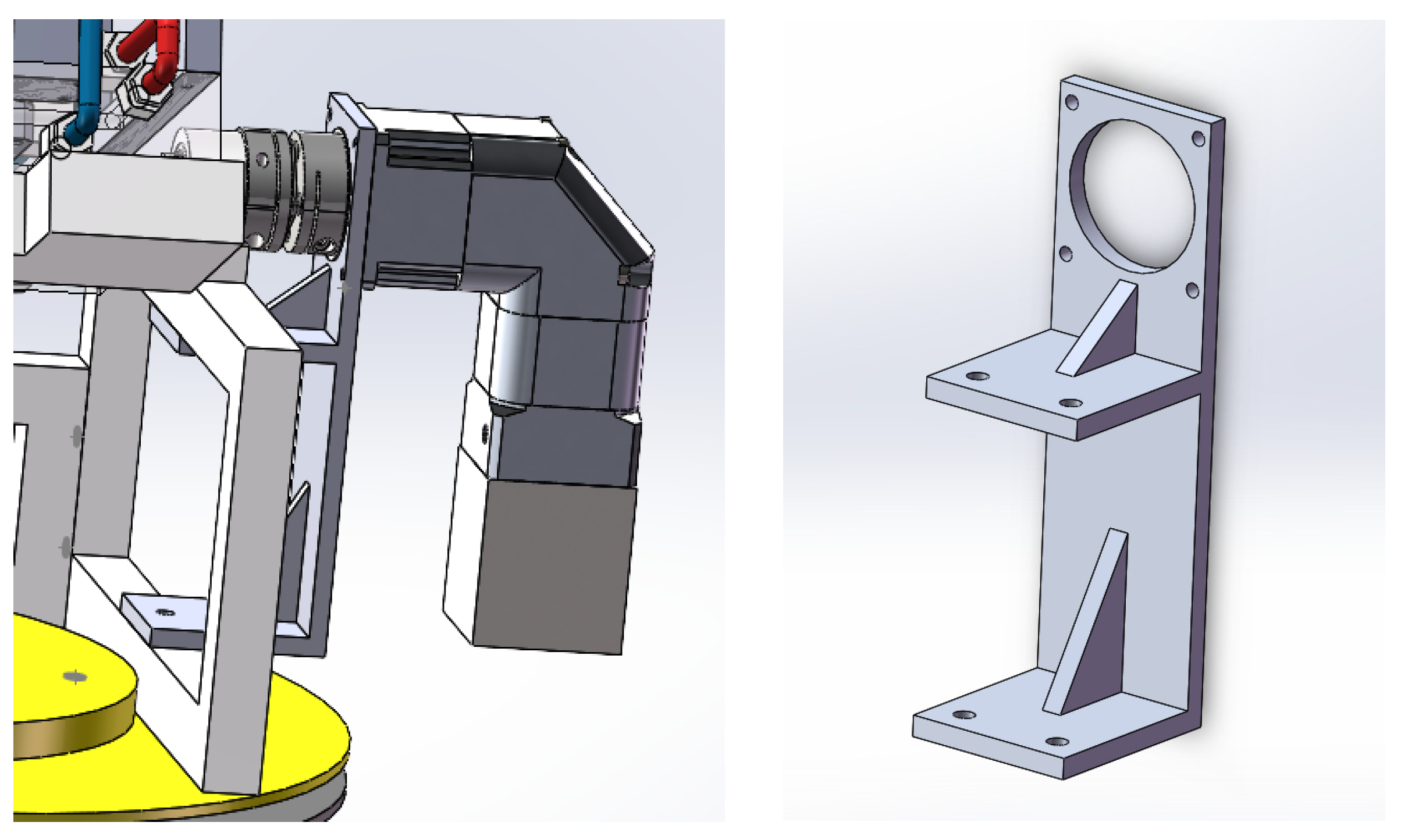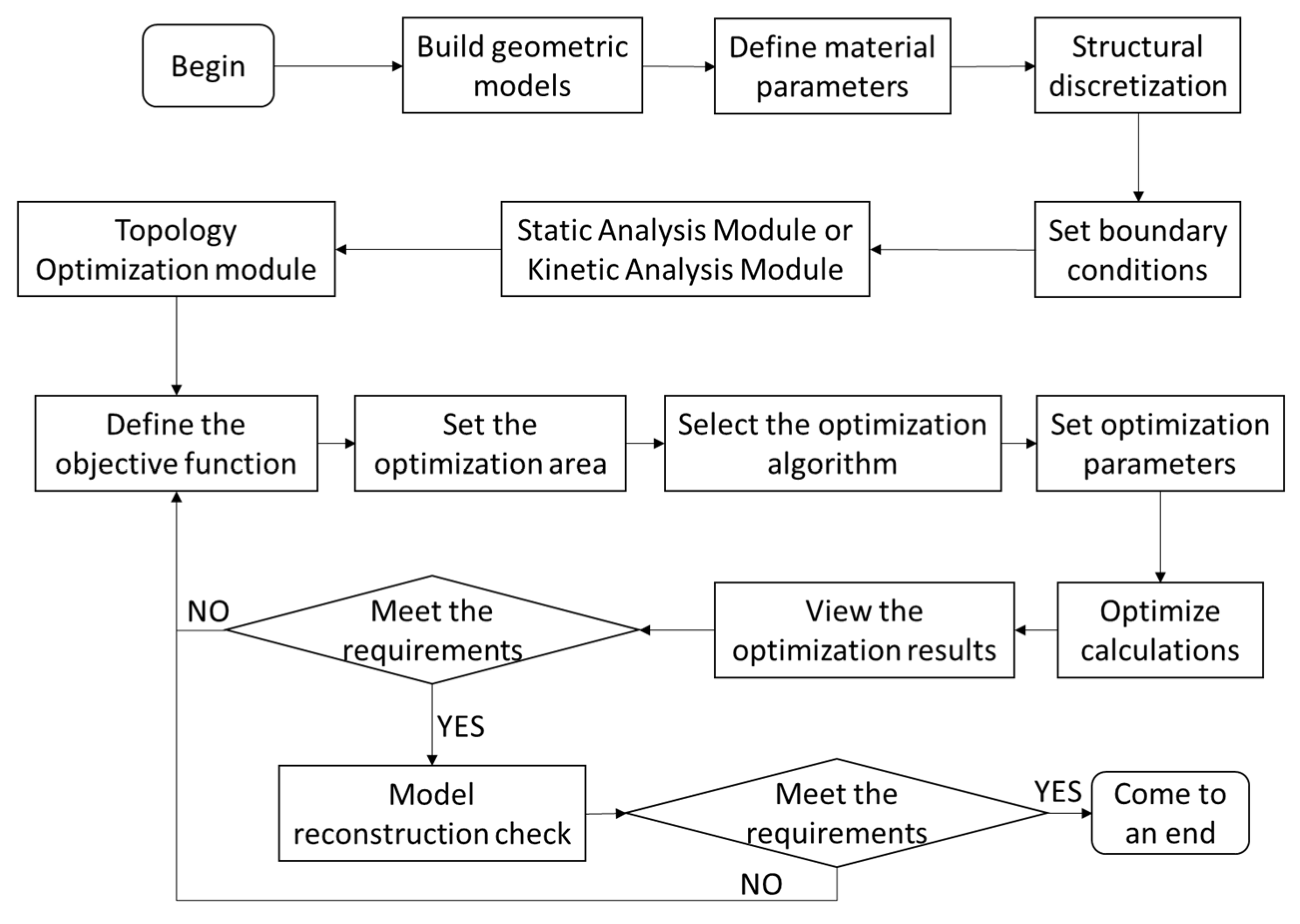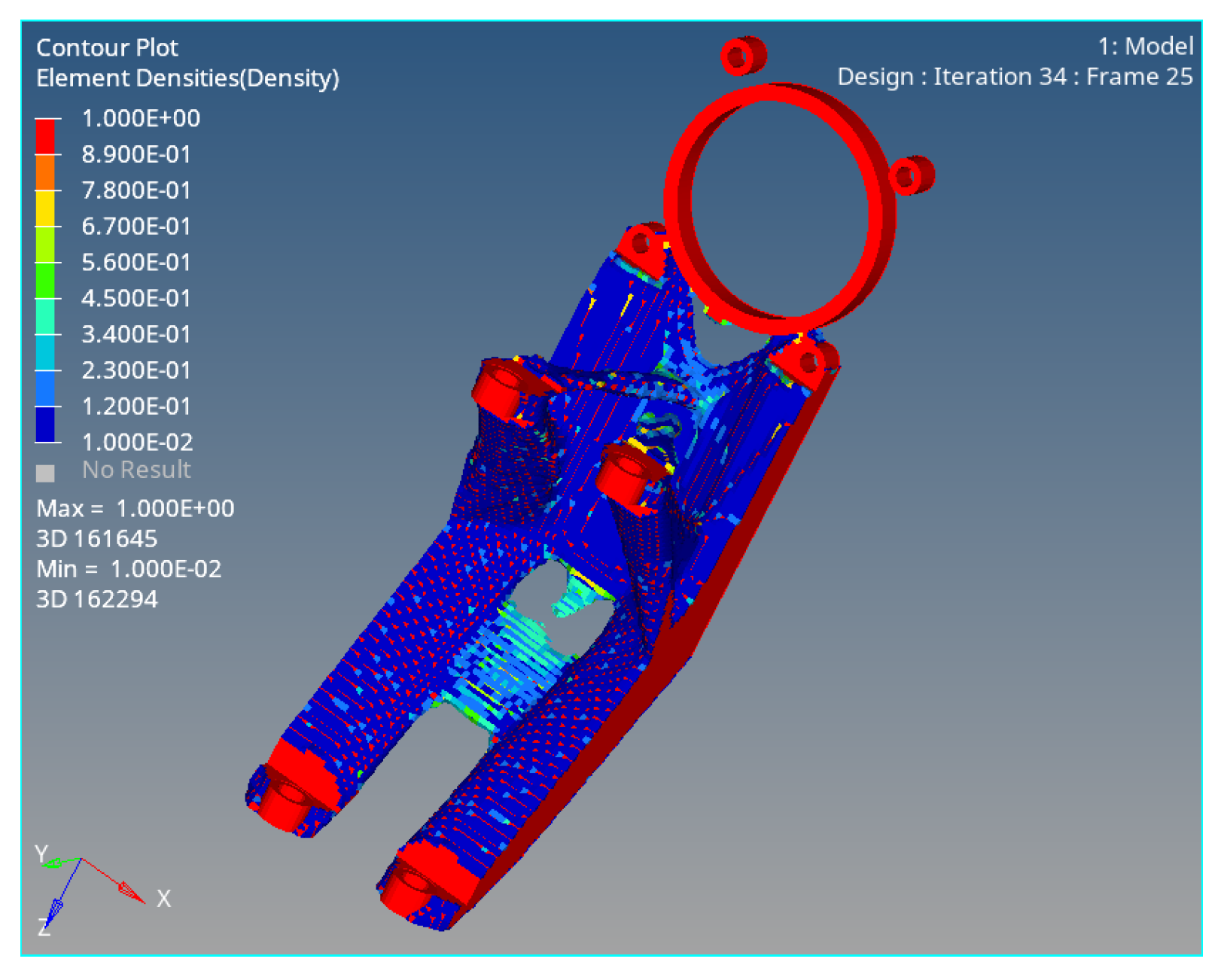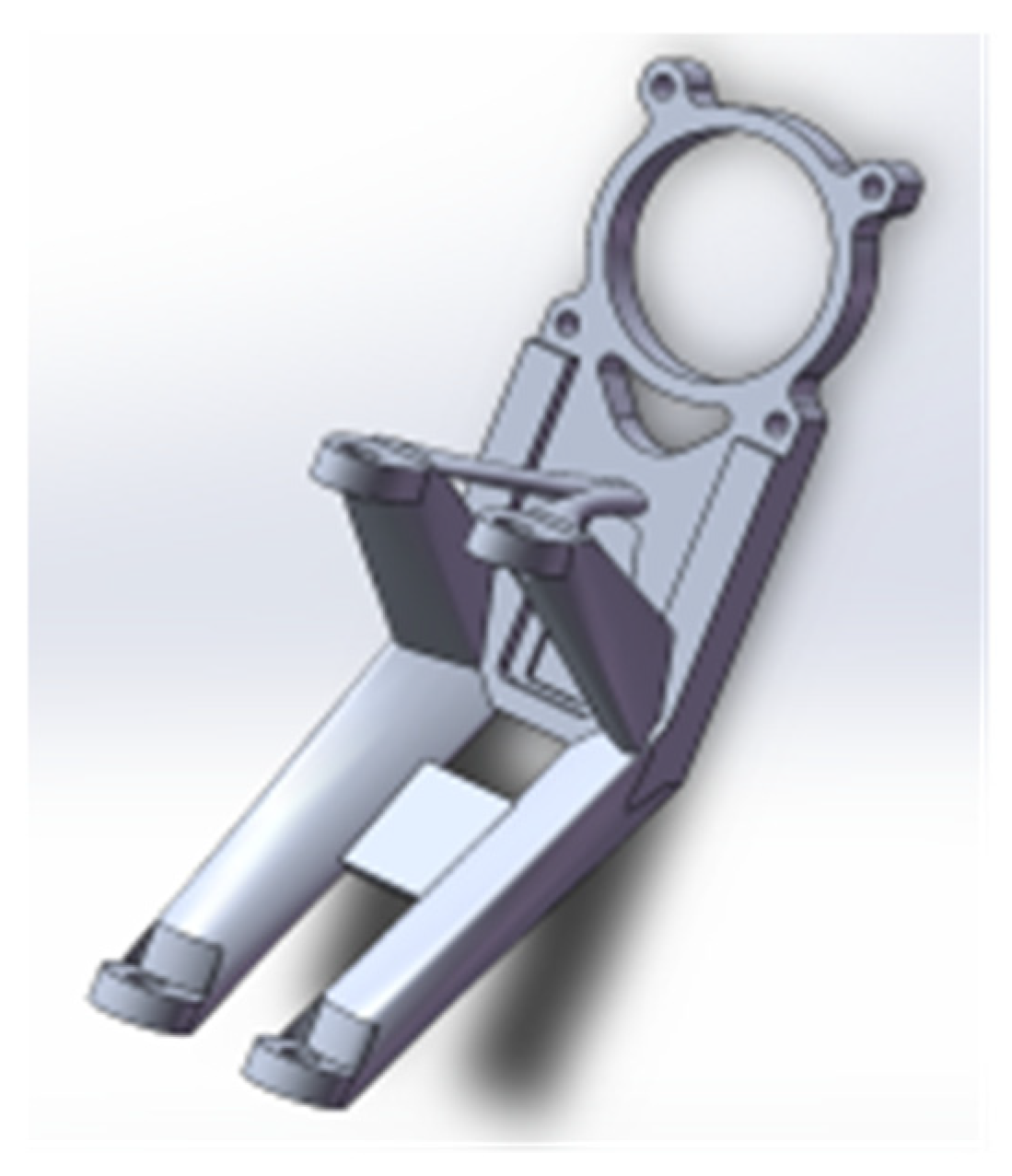With the increasing scope and needs of human space activities, higher requirements have been put forward for the weight of spacecraft. Advanced aerospace equipment is developing in the direction of high performance, high reliability, long life, and economic affordability, and the harsh and contradictory requirements of space structure configuration, light weight, and high efficiency. The lightweight space structure has become an important strategic goal for the development of aerospace technology in the future, and at the same time, the lightweight of institutions is also the direction of unremitting efforts in the aerospace field. Due to the limitation of launch vehicle launch capacity, the weight of the spacecraft is closely related to the launch conditions and launch cost, and relevant studies have shown that the cost of the spacecraft can decrease by about US
$10,000 for every 1 kg decrease in mass [
1]. Reducing the weight of spacecraft can be used to increase the payload of spacecraft to ensure the completion of spacecraft missions and space expansion [
2]. In the process of component lightweighting, the manufacturing cost can be reduced, but the bearing capacity and safety factor of the component can also be reduced, and the safety and use intensity of the component in the work are the most fundamental requirements of lightweight design, so it is very important to find a balance between the contradictory needs of lightweight and performance.
The space structure environment includes all the natural environments that the space structure is subjected to during its life cycle, including not only the environment in the orbit phase but also all the environments in the storage, transportation, launch stage, and re-entry and return stages of ground products. The design and analysis of spatial structure includes the analysis of a variety of environments and influences, such as thermal environment analysis, thermodynamic coupling analysis, etc. These environmental and effect analyses are an important part of the overall design foundation [
3]. The focus of this paper will be on how to comprehensively and effectively analyze the environment of spacecraft, correctly apply mathematical models and methods to realize the reasonable analysis and design of spacecraft, and effectively combine traditional topology optimization methods with complex working conditions of space structure to carry out correct and effective multi-objective optimization design of space structure.
Since the birth of the finite element method and the proposal of mathematical programming in the early 1960s of the 20th century, structural optimization technology has ushered in vigorous development and is widely used in engineering practice. Ref. [
4] used the spacecraft structure optimization system to optimize the design of a complex satellite structure, and the lightest weight and the thickness of the composite sheet were used as design variables, and the satellite weight was reduced by 30.6 kg. Ref. [
5] The structure of the discontinuous laminated composite satellite solar wing substrate was optimized by using composite structure optimization technology, and the weight of the solar wing substrate panel was reduced by 53%. In Ref. [
6], a reasonable optimization model was established for the satellite architecture structure through finite element analysis and modal test verification, and the weight was reduced by 10%. In Ref. [
7], various schemes were proposed for the topology of the main frame of the space solar telescope, and the topology of the main frame was compared and optimized, and the weight of the main frame was reduced by 36% by shape optimization and size optimization. Ref. [
8] optimizes the design of the composite structure of the satellite load-bearing tube, and the weight of the structure is reduced by 13.09% while meeting the requirements. A multi-objective topology optimization algorithm based on neural networks and the criterion method was studied in Ref. [
9]. Based on the fuzzy theory, the multi-objective topology optimization method was used to optimize the design of the part and the dynamic performance and stiffness of the part were maximized [
10]. Ref. [
11] verifies the feasibility of the multi-objective topology optimization design method based on fuzzy theory and the multi-level sequence method. In Ref. [
12], the compromise programming method is used to transform the multi-objective topology optimization problem into a single-objective topology optimization problem, and the optimal topology structure of the frame is obtained. In Ref. [
13], the eclectic programming method was used to optimize the multi-objective topology of auto parts, and the optimal design of parts was realized. Based on the compromise programming method and the reciprocal method of the eigenvalue of the penalty factor, the multi-objective topology optimization design of the control arm was carried out in Ref. [
14], and finally, the weight reduction of the structure was realized while the natural frequency of the structure was increased. Based on the genetic algorithm for the multi-objective topology optimization design and size optimization design of the bus body frame, the torsional stiffness was increased by 13.14%, while the weight of the body frame was reduced by 3.43% [
15]. Ref. [
16] used the KLS formula to optimize the multi-objective topology of multi-structure components in the automation industry based on the genetic algorithm, and the results show that the KLS formula can effectively reduce the number of multi-objective topology optimization designs and make them independent of the mesh size. The above-mentioned researchers have applied the topology optimization method to the lightweight design of the space agency and obtained a good weight reduction effect, but most of them only consider a single important working condition or use the multi-objective topology optimization method to optimize the corresponding structural parts in other fields and do not fully consider the problem of multi-objective topology optimization design under the complex working conditions suffered by the space agency in the whole life cycle.
Based on this, the structural optimization design method is applied to the lightweight design of a spatial structure. Considering the complex working conditions of the spatial structure, the weight reduction of the structure is taken as the goal, the multi-objective topology optimization method is used to find the optimal force transmission path of the spatial structure, and the basic model of the spatial structure is obtained by interpreting the optimization results and geometric reconstruction. The performance of the spatial structure under extreme operating conditions is analyzed and explored, and the performance of the spatial structure, such as stiffness, dynamic response, and stability, is investigated to prove the rationality of the lightweight design.

























